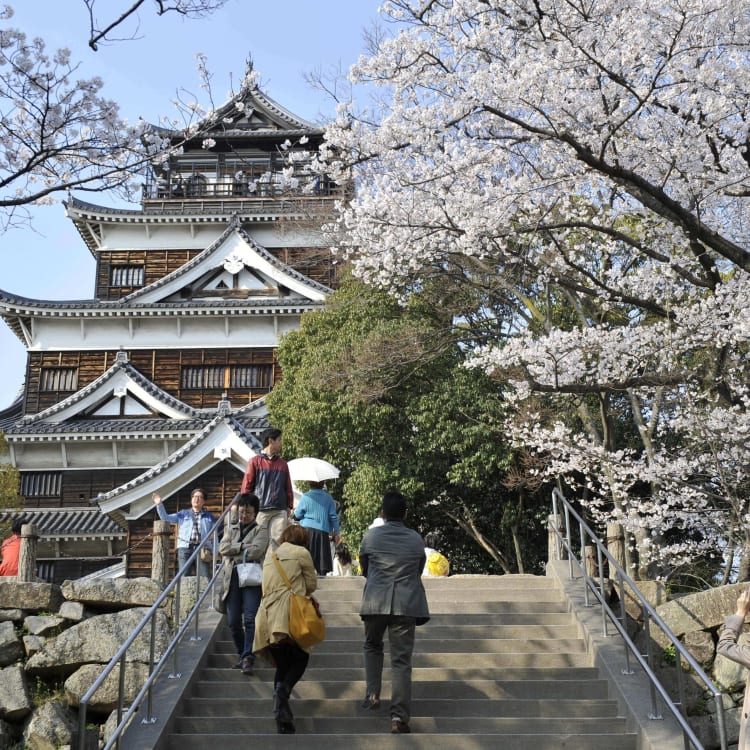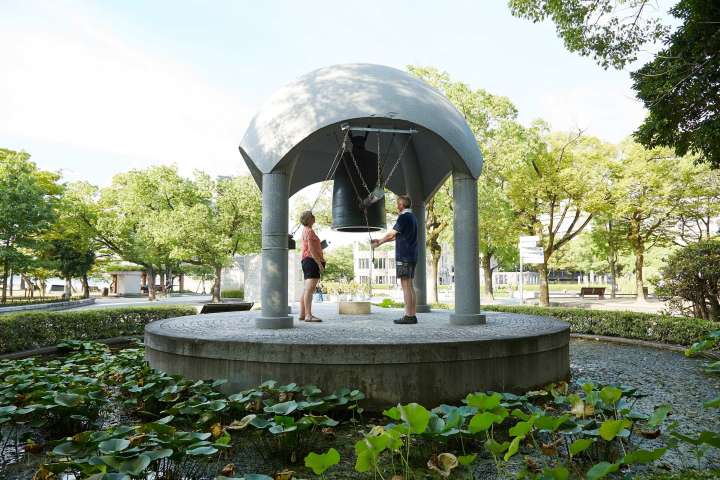
Story Hiroshima: Sites in the City by JNTO on 09 January 2018
After the devastating atomic bomb in August 6, 1945, Hiroshima has since rebuilt itself into one of Japan’s prettiest cities. Today, this coastal city, backed by mountains on three sides, boasts a mix of parks, cafes and bustling nightlife.
Hiroshima Castle
The original Hiroshima Castle dated from the 1590s, and prior to being destroyed in WWII it was one of Japan’s most beautiful. Nicknamed “Ri-jo” (Carp Castle), it was the inspiration for the city’s baseball team, the Carps.
Today’s version of Ri-jo is a replica of the original, dating from 1958. It’s still one of Japan’s outstanding hirajiro (flatland castle), and its 5-storey tower is one of the city’s best attractions.

Peace Memorial Park
Hiroshima’s biggest site is the Peace Memorial Park, an area which used to be the city’s packed downtown that was leveled by the bomb. Redeveloped after the war, today it’s one of Japan’s biggest and best urban green spaces, containing monuments dedicated to peace.
At its heart is the famous Peace Bell, set amidst a lotus pond, itself symbolic of rebirth. The bell’s beautiful sound can regularly be heard tolling, as visitors are encouraged to ring it. Donated by local bomb survivors in 1964, the 1,200kg bell is embossed with a borderless world map, symbolizing Hiroshima’s hope for a single, united world.

Genbaku Dome

A-Bomb Dome
The icon of Hiroshima today is the former Industrial Promotion Hall, better known as genbaku dome or “A-Bomb Dome” – ground-zero where the atomic bomb struck on 6 August 1945. It is kept in the exact skeletal condition it was in as a lasting reminder of that day.
Local students often volunteer as guides for foreign visitors during weekends and holidays.

Hiroshima’s Trams
Hiroshima is home to the largest tram network in Japan (35km), and is a great way to get around downtown. Founded in 1910, it was almost entirely destroyed in 1945, save a few cars which survived the bomb. They have since been refurbished and remain in service today, including the famous No. 653. Cities from around the world also donated tram cars to Hiroshima, and locals have an emotional attachment to their historic tram network.
Alternatively, Hiroshima also has a fleet of rental e-bikes called “Peacecles” offering unlimited rides for ¥1,080 per day (register online here).

Nagarekawa
Nagarekawa is Hiroshima’s nightlife hub with its warren of streets lined with bars, clubs and restaurants of every size and shape. While the scene is continually evolving as new places open, the one constant staple is its okonomiyaki, served at late-night stalls which are popular with after-hours revelers.
Nagarekawa’s Central Park is the tranquil home of the 16th century Mitaki Temple, part of which was transplanted from Wakayama to Hiroshima after the war. Now it’s one of Hiroshima’s top sakura viewing spots in spring, and autumn leaves in fall.
























































